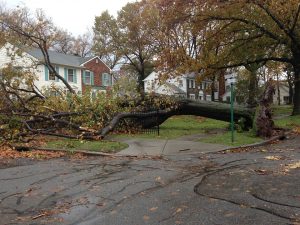 Courtesy of iii.org
Courtesy of iii.org
The 2018 Atlantic hurricane season was less active than the 2017 season but still caused extensive property damage across the southeastern United States, according to the Insurance Information Institute (I.I.I.).
The 2018 hurricane season officially concludes tomorrow (Nov. 30) and saw the formation of 15 named storms. Eight of the 15 became hurricanes, and two (Florence and Michael) became major hurricanes, according to Philip Klotzbach, Ph.D., a research scientist with the Department of Atmospheric Science at Colorado State University (CSU). Klotzbach is also a non-resident scholar with the I.I.I.
The original CSU forecast for 2018, presented in April, predicted slightly above-average hurricane activity with three major hurricanes. The seasonal outlooks CSU subsequently released in the summer envisioned less hurricane activity, with CSU forecasting 12 named storms, five hurricanes, and one major hurricane on Aug. 2.
“Even in what ended up as an average year for major hurricane activity, 2018 was record-setting, with Hurricane Florence spurring statewide rainfall records in North and South Carolina. In addition, Hurricane Michael was the first time on record a Category 4 hurricane made landfall in the Florida Panhandle,” said Sean Kevelighan, I.I.I. CEO. “As financial first responders, the insurance industry continues to be on the ground, helping to rebuild our customers’ livelihoods and economies more broadly. Nonetheless, these extraordinary hurricanes highlighted for coastal residents and businesses the importance of disaster preparedness, building resilient structures and insuring properties against both flood and wind-caused damage.”
A named storm is considered a hurricane when its sustained wind speeds are at least 74 miles per hour. Major hurricanes are those that are designated as a Category 3 storm or higher, with sustained wind speeds of at least 111 mph.
Florence made landfall as a Category 1 storm on Sept. 14 near Wilmington, North Carolina. It was categorized as a major hurricane in the Atlantic Ocean, but the storm’s wind speeds diminished significantly before striking the U.S. coastline. The weather system lingered for days in the Carolinas, dumping as much as 36 inches of rain in North Carolina and 24 inches in South Carolina, the most ever recorded there after a hurricane.
Michael made landfall on Oct. 10 near Mexico Beach, Florida. More than 85,000 of the 125,000-plus claims Florida’s insurers received as of Nov. 16 as a result of Hurricane Michael were for insured residential properties, and the total estimated insured claim payouts currently are estimated at $3.4 billion.
An average Atlantic hurricane season produces 12 named storms and six hurricanes, including three major hurricanes. The 2017 hurricane season had 17 named storms. Ten of the 17 reached hurricane strength and six became major hurricanes, according to the National Oceanic and Atmospheric Administration (NOAA).



